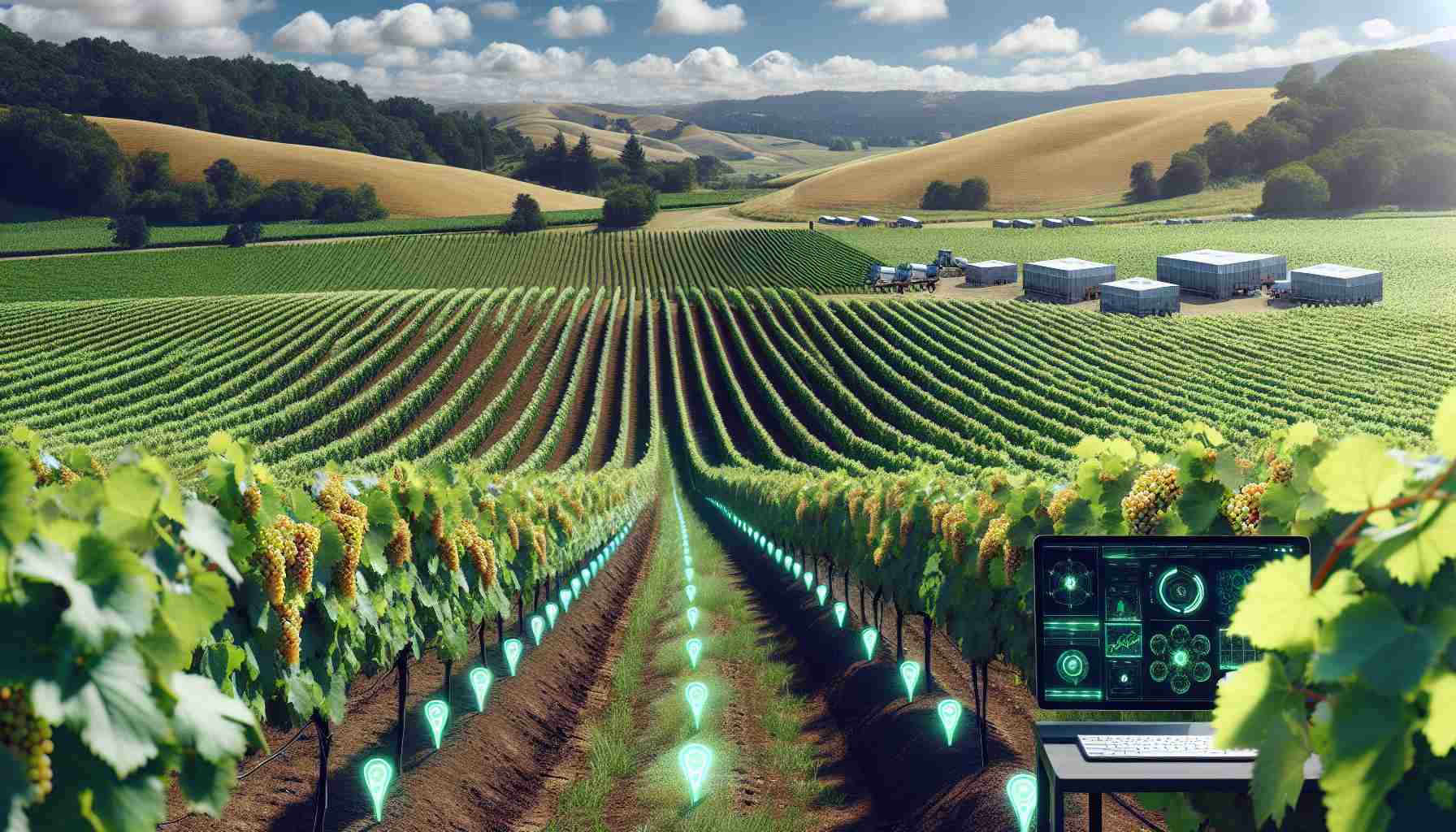Blockchain technology finds fertile ground in Virginia’s agriculture, as Brix and Columns Vineyards partners with a local tech innovator to enhance farming practices. Nestled amidst the scenic backdrop of Shenandoah National Park, the vineyard has faced challenges with unpredictable weather since its establishment in 2017. Stephanie and Steve Pence, who own the vineyard, were captivated by the proposition of employing blockchain-integrated weather stations on site.
These high-tech weather stations, presented by Alexander Mann of Smart Grow Agritech, offer real-time climate monitoring. Stephanie and Steve are excited about the benefits, which include accurate tracking of rainfall and winds—crucial for the timing of crop treatments. The technology not only helps in managing their vineyards more effectively but also provides them with a visually engaging way to communicate the nuances of their craft to patrons.
Virginia-born Alexander Mann sees the value of blockchain beyond its traditional financial applications. He established Smart Grow Agritech with the insight that the immutable nature of blockchain can safeguard essential farming data. Mann envisions leveraging the accumulated data from the season for future agricultural insights and strategies.
The state’s political sphere is taking an interest in the potential of this technology in agriculture. State Senator Saddam Azlan Salim, serving on the Senate’s agriculture-focused committee, recognizes the potential and is coordinating with Mann to explore policies that would facilitate the adoption of blockchain in farming.
As for Brix and Columns, they plan to further weave blockchain into the customer experience by making detailed viticultural data accessible via QR codes on their wine bottles, setting the stage for a tasteful blend of tradition and innovation. This integration heralds a new chapter for agriculture, where data-driven decision-making can flourish under the meticulous care of Virginia’s vintners.
Importance of Blockchain in Agriculture
The application of blockchain technology in agriculture is becoming increasingly significant due to its capability to enhance transparency, traceability, and efficiency. By providing a decentralized and secure ledger, blockchain can help in verifying the authenticity of food products, tracking the supply chain from farm to table, and ensuring that the data related to farming practices is tamper-proof. This can result in increased consumer trust, as they have more information about the origin and handling of the products they buy.
Key Questions and Answers:
– How does blockchain technology benefit vineyards like Brix and Columns?
The technology allows for accurate tracking of climate data, which is essential for optimal timing of crop treatments. It also enables visual communication of the vineyard’s processes to customers.
– What challenges are associated with introducing blockchain in agriculture?
Some of the challenges include the complexities of integrating technology with existing agricultural processes, the cost of implementation, the need for technological literacy, and the establishment of industry standards.
– What potential controversies could arise from the use of blockchain in agriculture?
Issues such as data privacy, the digital divide between large and small-scale farmers, and the potential for data misuse could be points of contention.
Advantages and Disadvantages:
Advantages:
– Improved Data Management: Accurate and immutable data storage for agricultural records.
– Enhanced Traceability: Better tracking of the product lifecycle from production to sale.
– Increased Efficiency: Streamlined processes and reduced paperwork, potentially reducing costs.
Disadvantages:
– Implementation Costs: High initial costs for setting up blockchain systems.
– Complexity: Technological complexities that may require specialized knowledge or training.
– Adoption Barrier: Resistance from parties accustomed to traditional farming methods.
Related Links:
For more information, you might find these websites useful:
– United States Department of Agriculture (USDA)
– Blockchain Council
– Virginia Department of Agriculture and Consumer Services
It is important to note that while the implementation of blockchain in agriculture, such as at Brix and Columns Vineyards, presents numerous benefits, the path forward will likely involve thorough discussions around the technology’s implications, regulations, and best practices for successful adoption.



